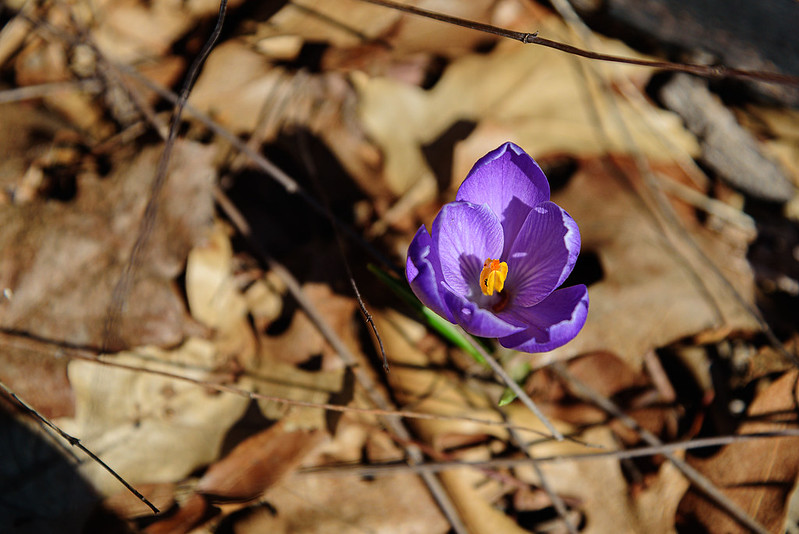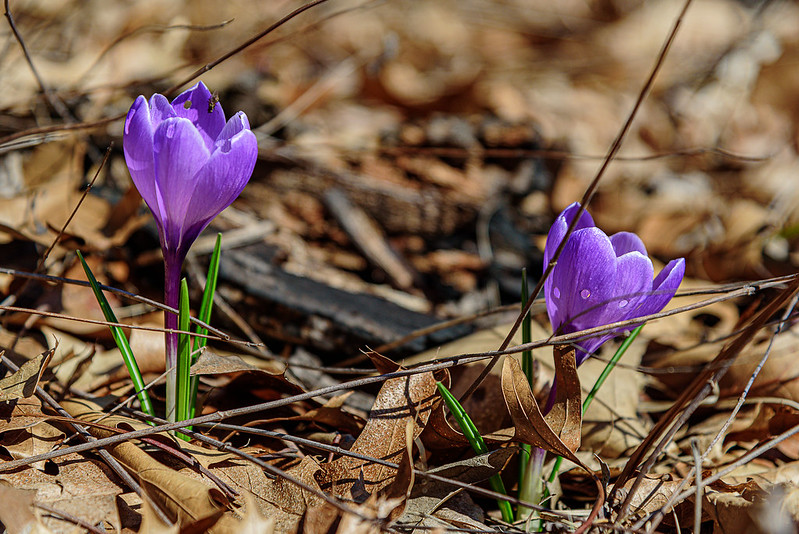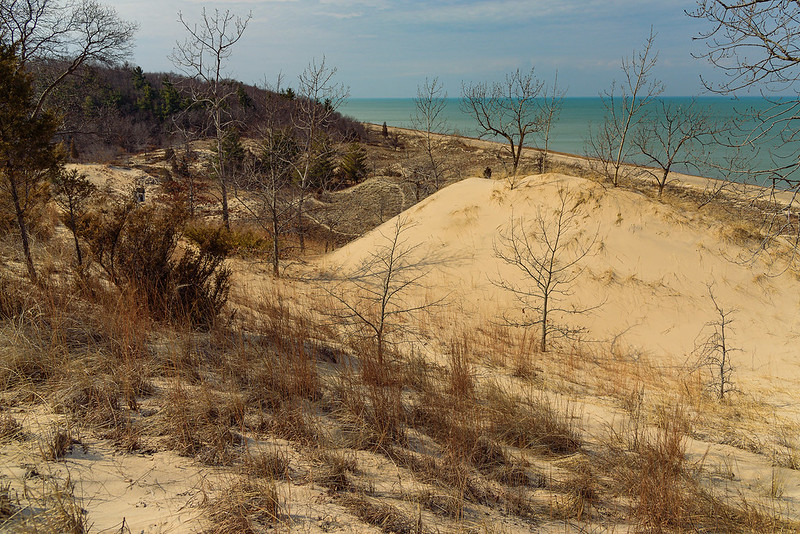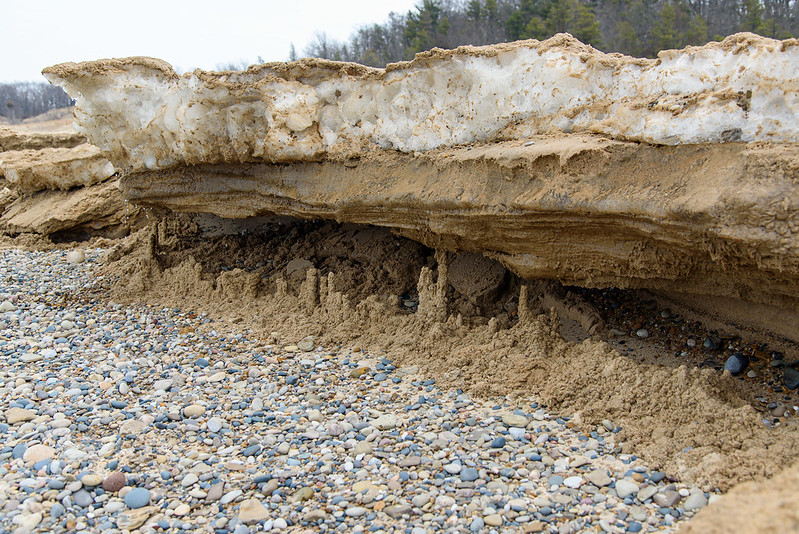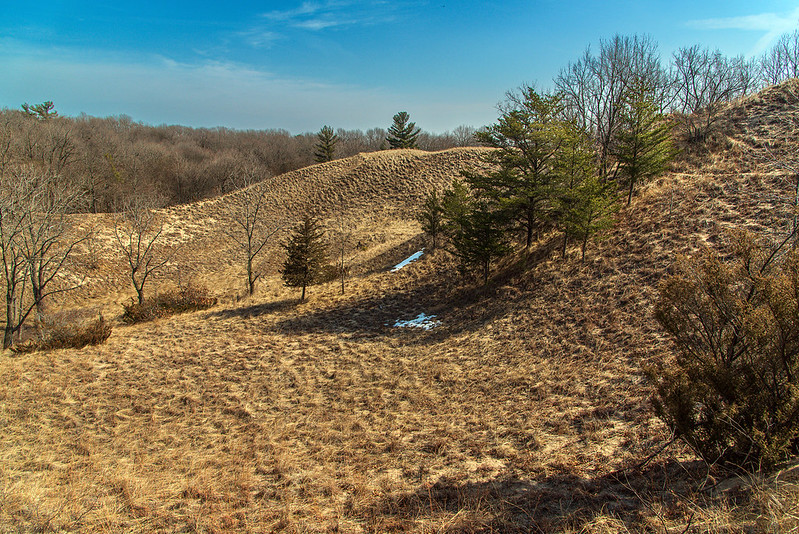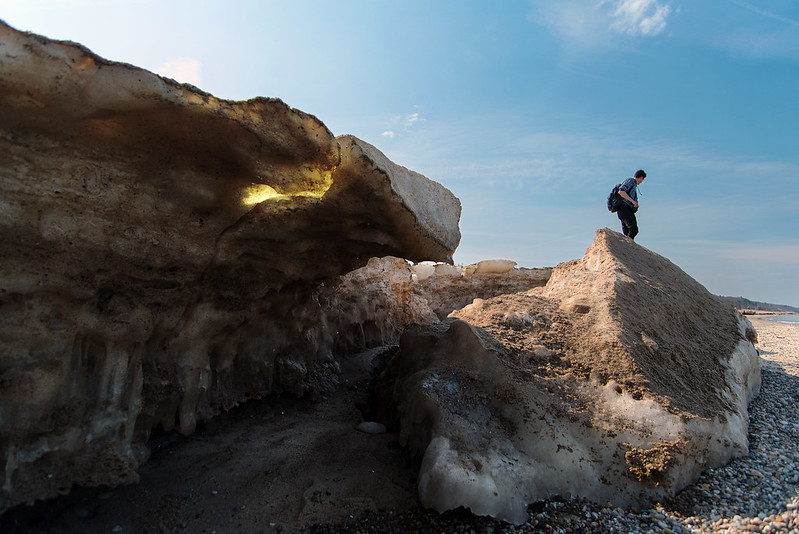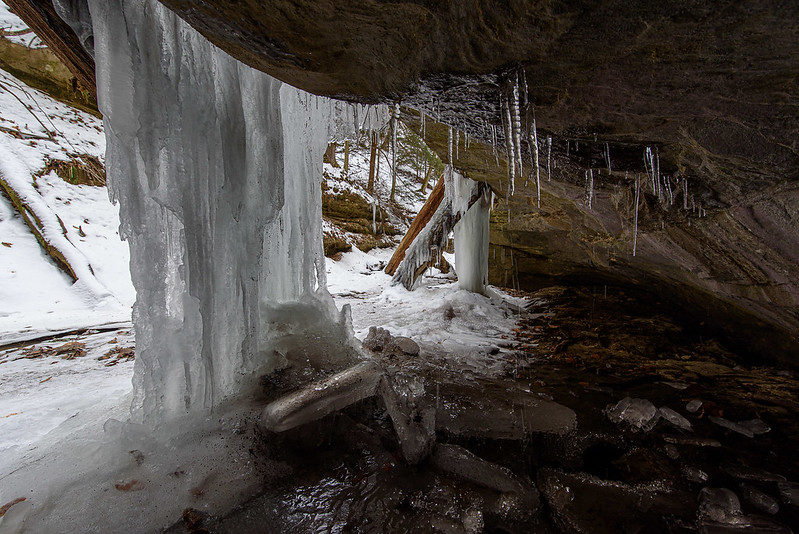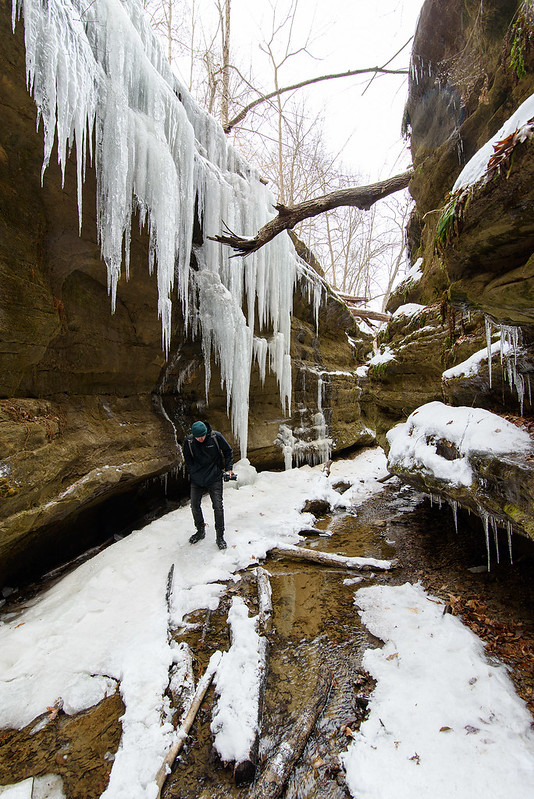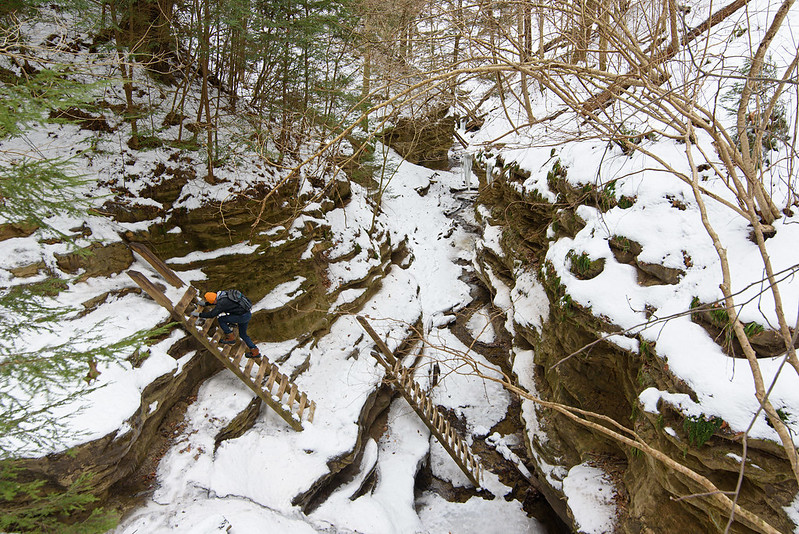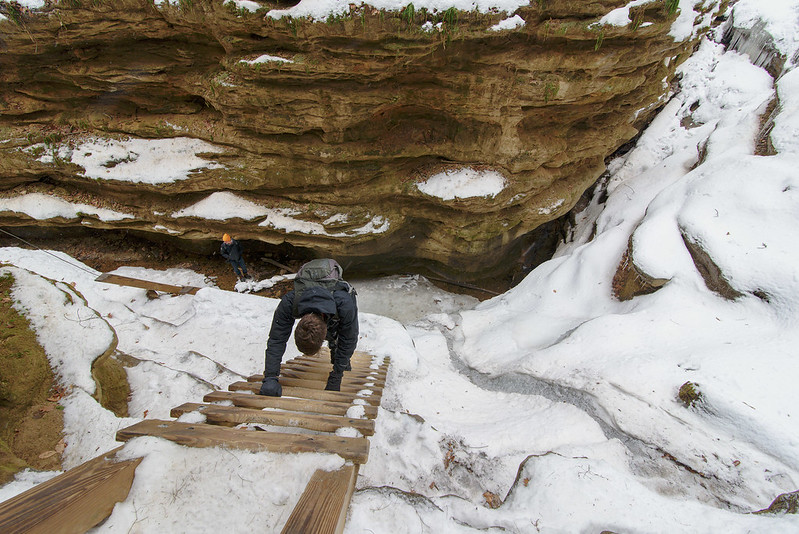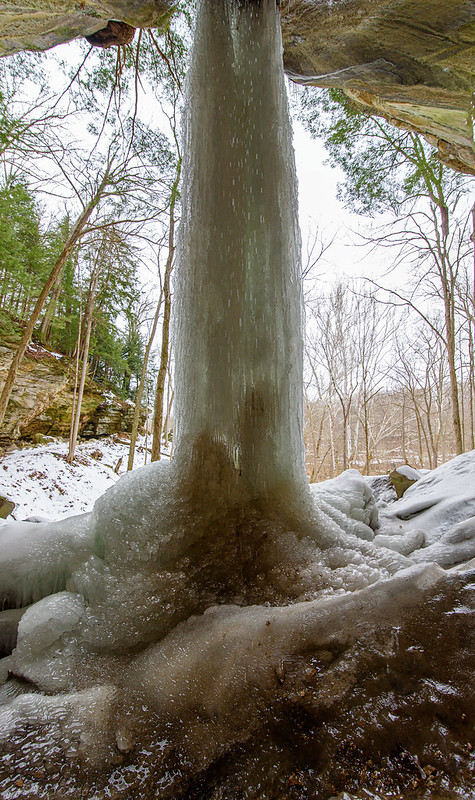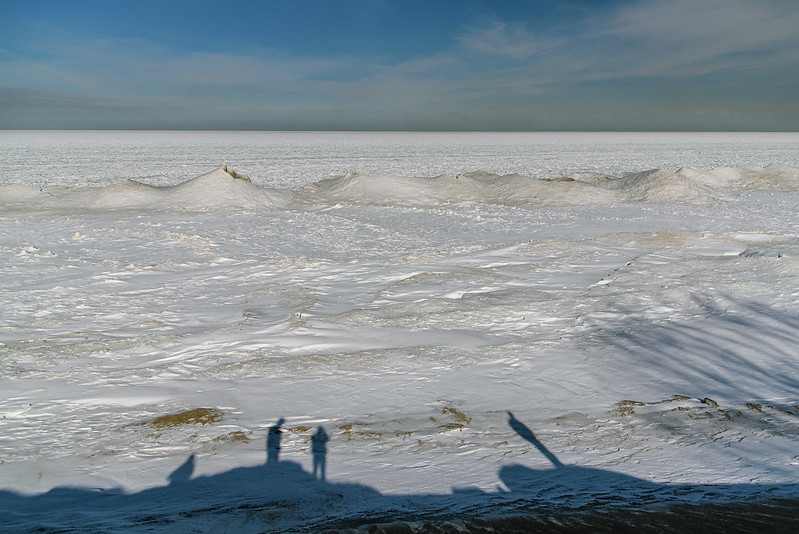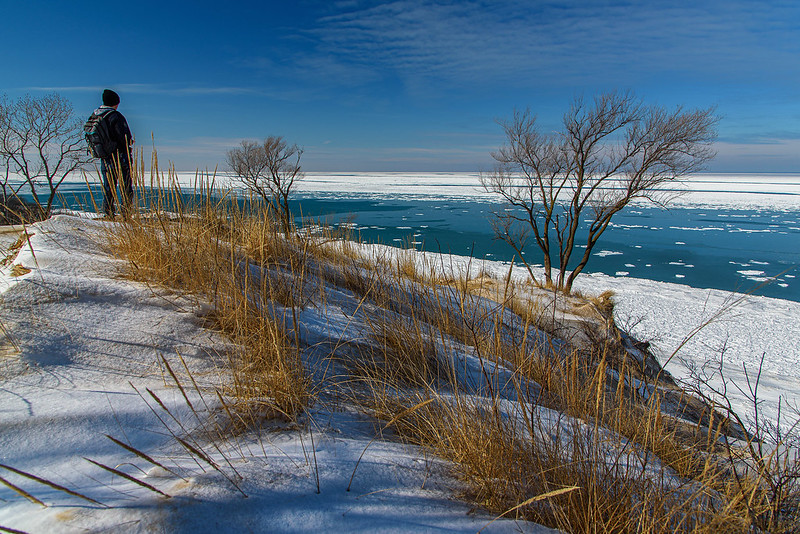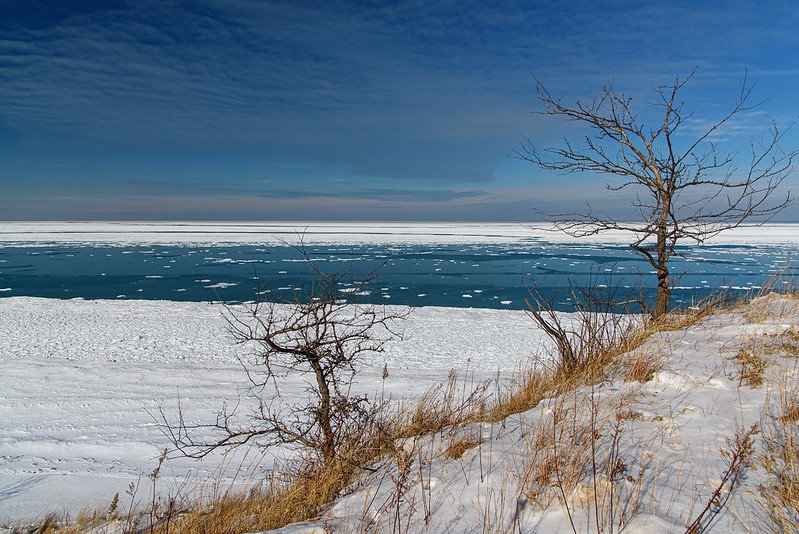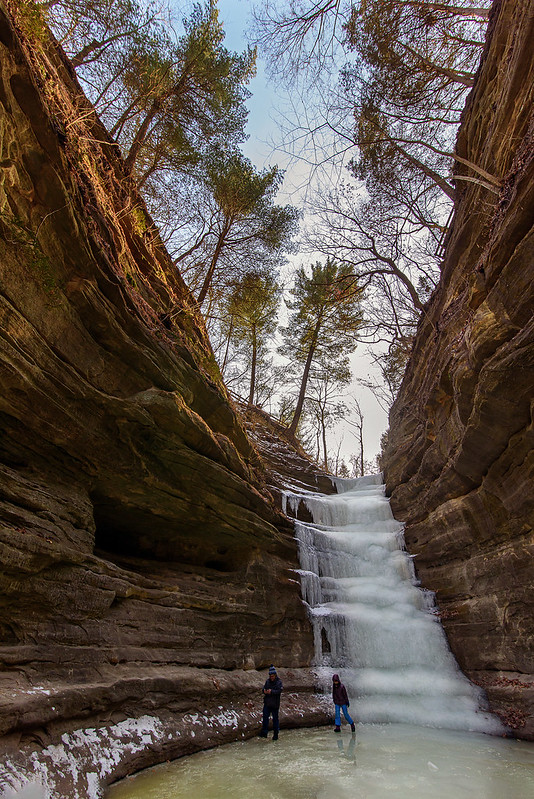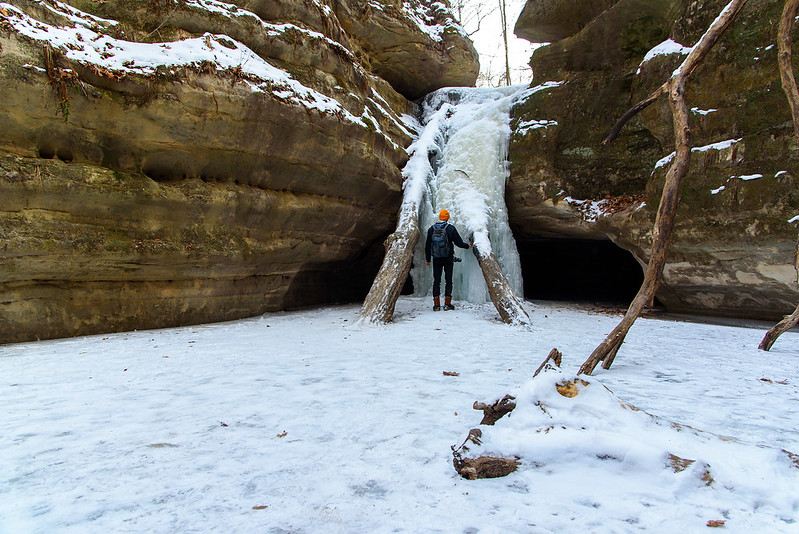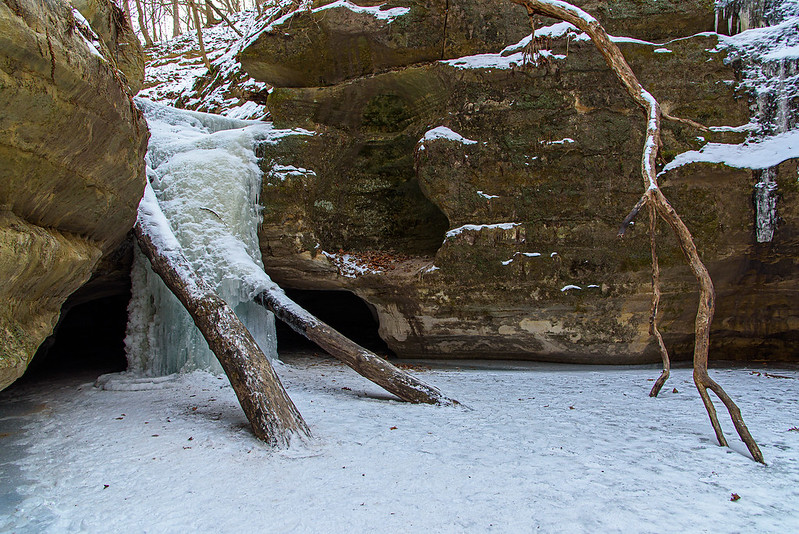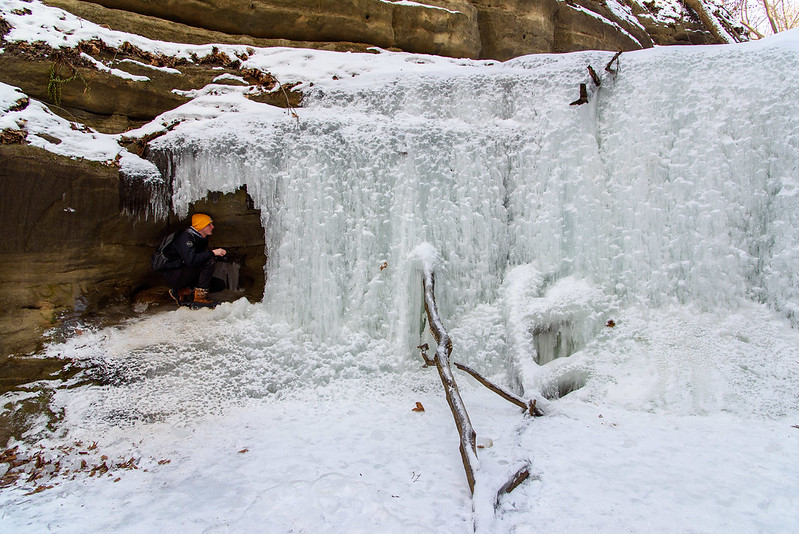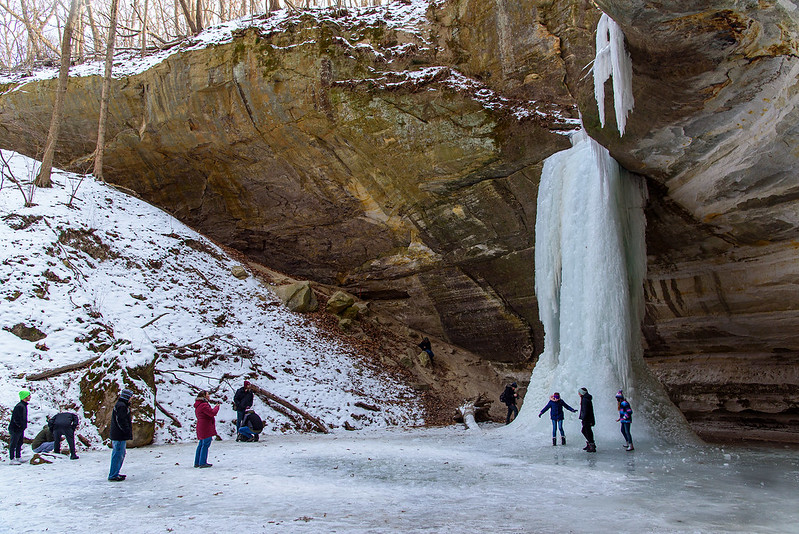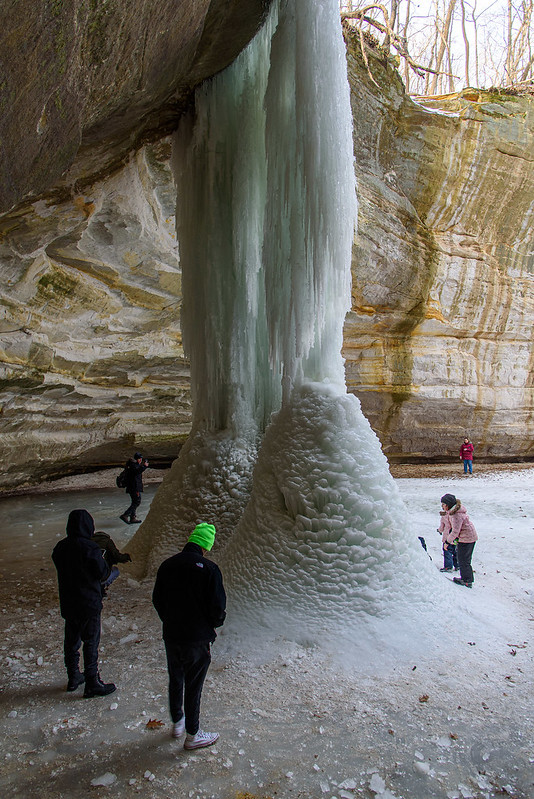
Arriving at Turkey Run State Park, the sign near the visitor center stressed the importance of wearing ice cleats, and listed some trails as flooded and impassable. Portions of Trail 3 were on the list, specifically the Punch Bowl feature, a narrow slot canyon with a 15 foot waterfall at the end. The end of the canyon is round, and resembles a punch bowl, hence the name.
High water was listed as the reason for the closure, and having hiked trail 3 many times before, I could understand why it would be difficult to reach this portion of the canyon. The trail heads up a small waterfall, and follows the stream for a couple hundred feet through the very narrow canyon, in dry parts of the summer, you can still get your feet wet.
As we approached the waterfall, we noticed it would be a bit of a challenge to climb, but with ice cleats and some planning, we managed to get up the running waterfall without getting water over our boots. Once up the waterfall, the fast running water got deeper, with fewer and fewer areas to place our feet. We heard two younger men hiking toward us, splashing and yelling about getting wet. They didn't have ice cleats, in fact, they wore cowboy boots, and had to step into the knee-deep freezing water from time to time just to get through the trail.
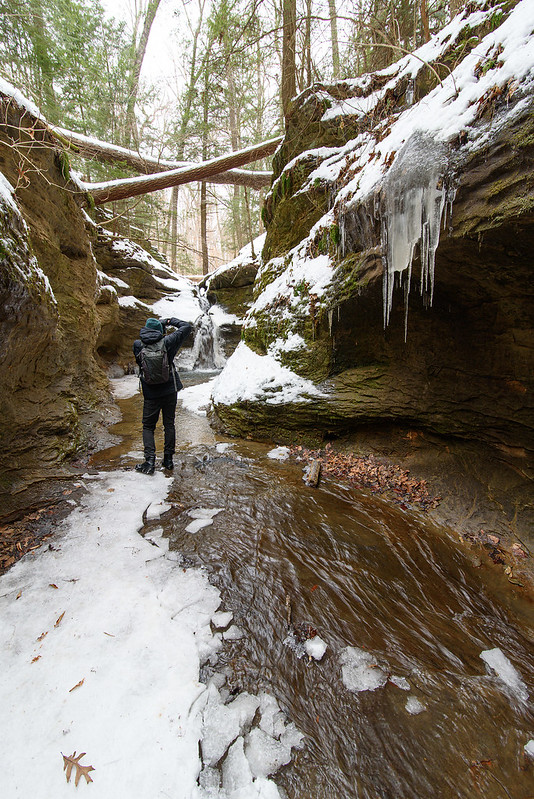
We waited on a block of ice for them to pass, and relayed to them what I thought was the safest route for negotiating the rest of the trail (the way we came). We proceeded to head upstream with the water flowing beneath us. I found the best way to walk was to place a foot on each side of the canyon, which at this point is about four feet wide. Trying not to get ourselves hemmed up, we carefully planned our route several steps ahead instead of step by step. This way, we could quickly execute each step with the next in mind, rather than taking a step then figuring out where to go. Often taking too much time to navigate each step will cause a slip or fall, or get you to a point where you can't move forward. At least the worst thing that could happen to us was to step into a foot or two of cold water, or perhaps slip into the water - a very uncomfortable walk back to the car.

As we turned the corner of the canyon toward the Punch Bowl, the stream was bordered by ice, making the walk into the canyon much easier. We could have walked most of the way to the waterfall, but we would have certainly gotten wet. Besides, photographing the waterfall in the context of the entire punch bowl was more appealing.
On our way out of the park, we crossed paths with a tour group. The ranger announced that it was too difficult to get to the punch bowl that day, and we mentioned to him that it was a difficult trek, but worth our attempt.
